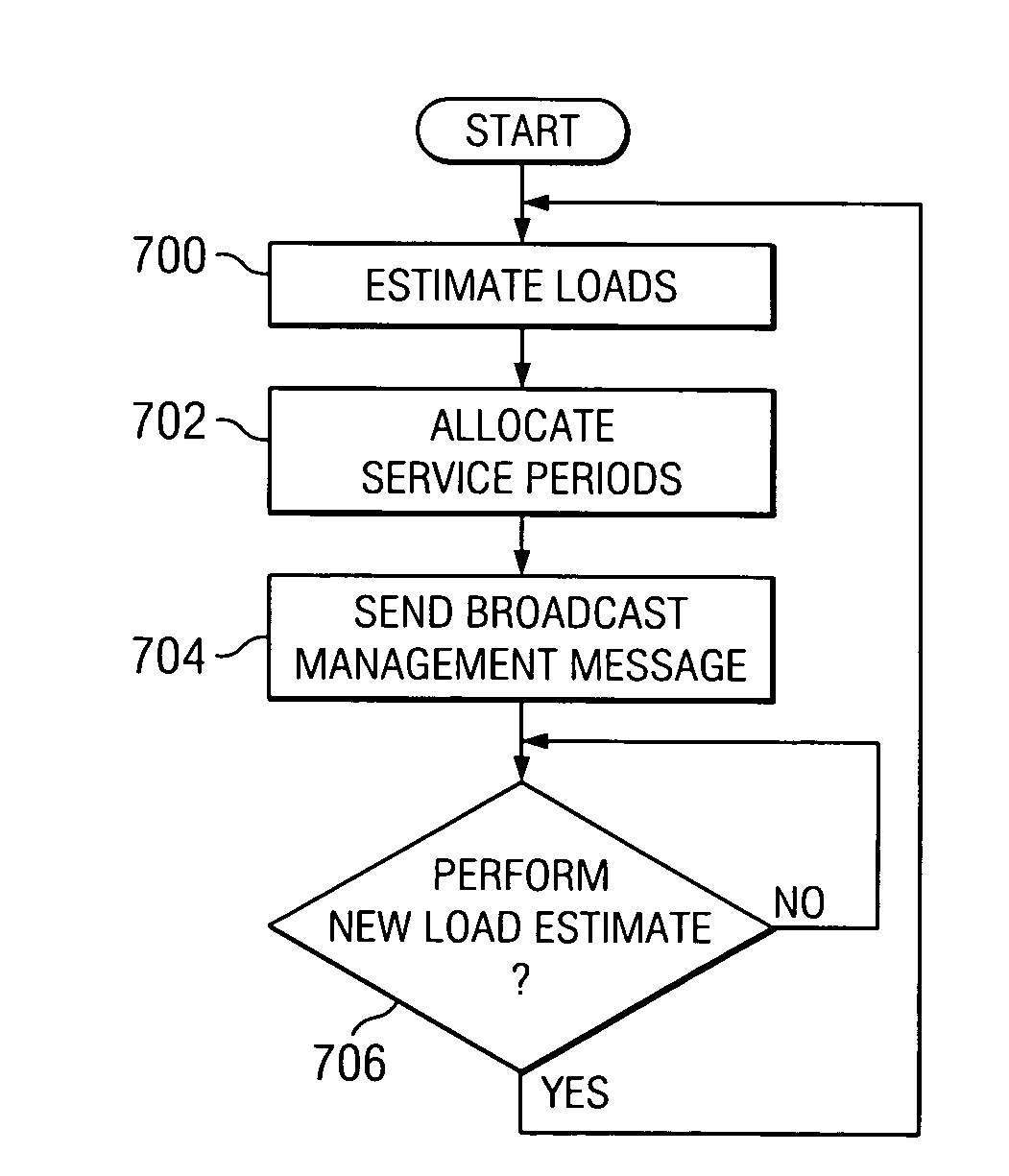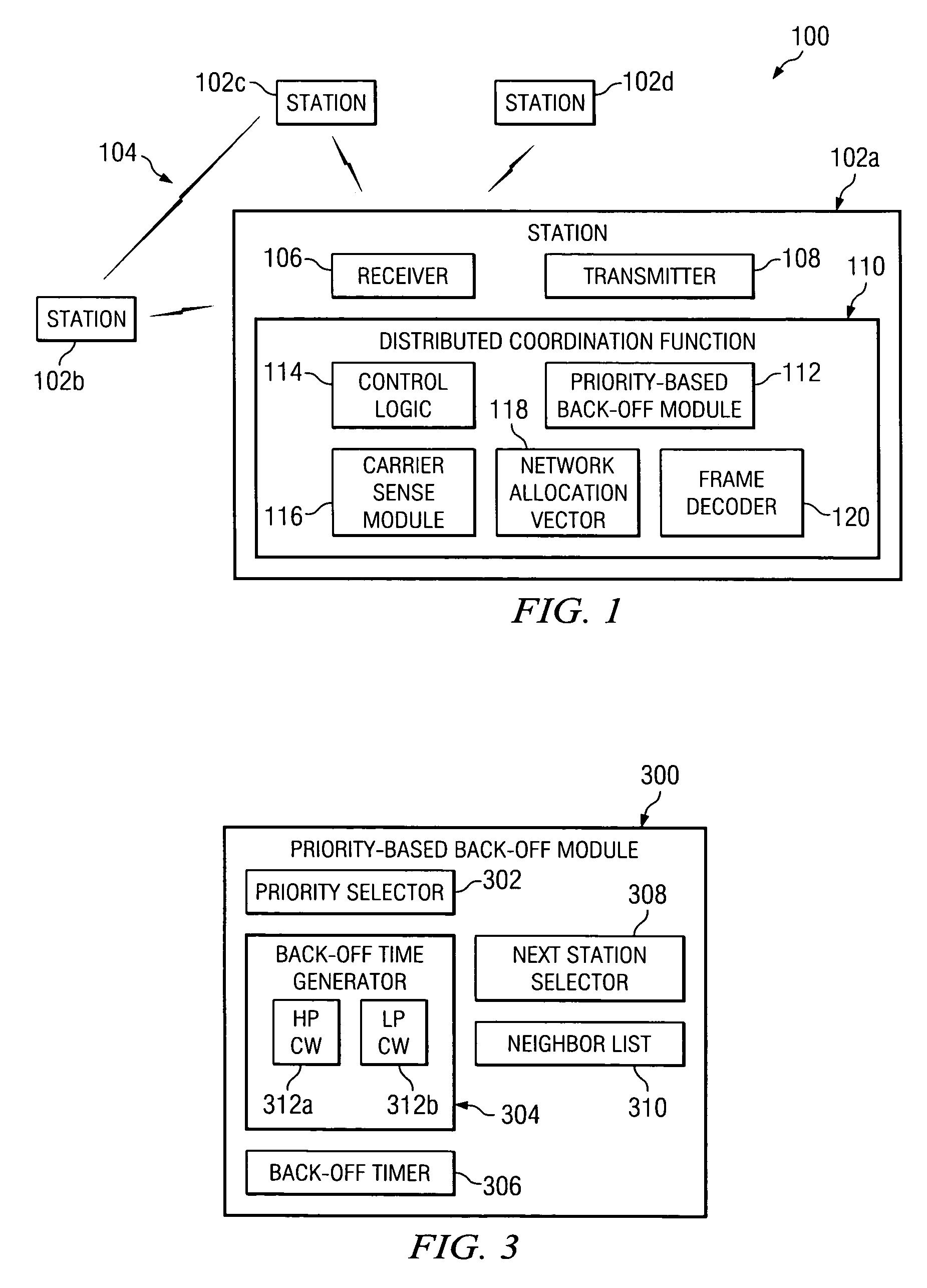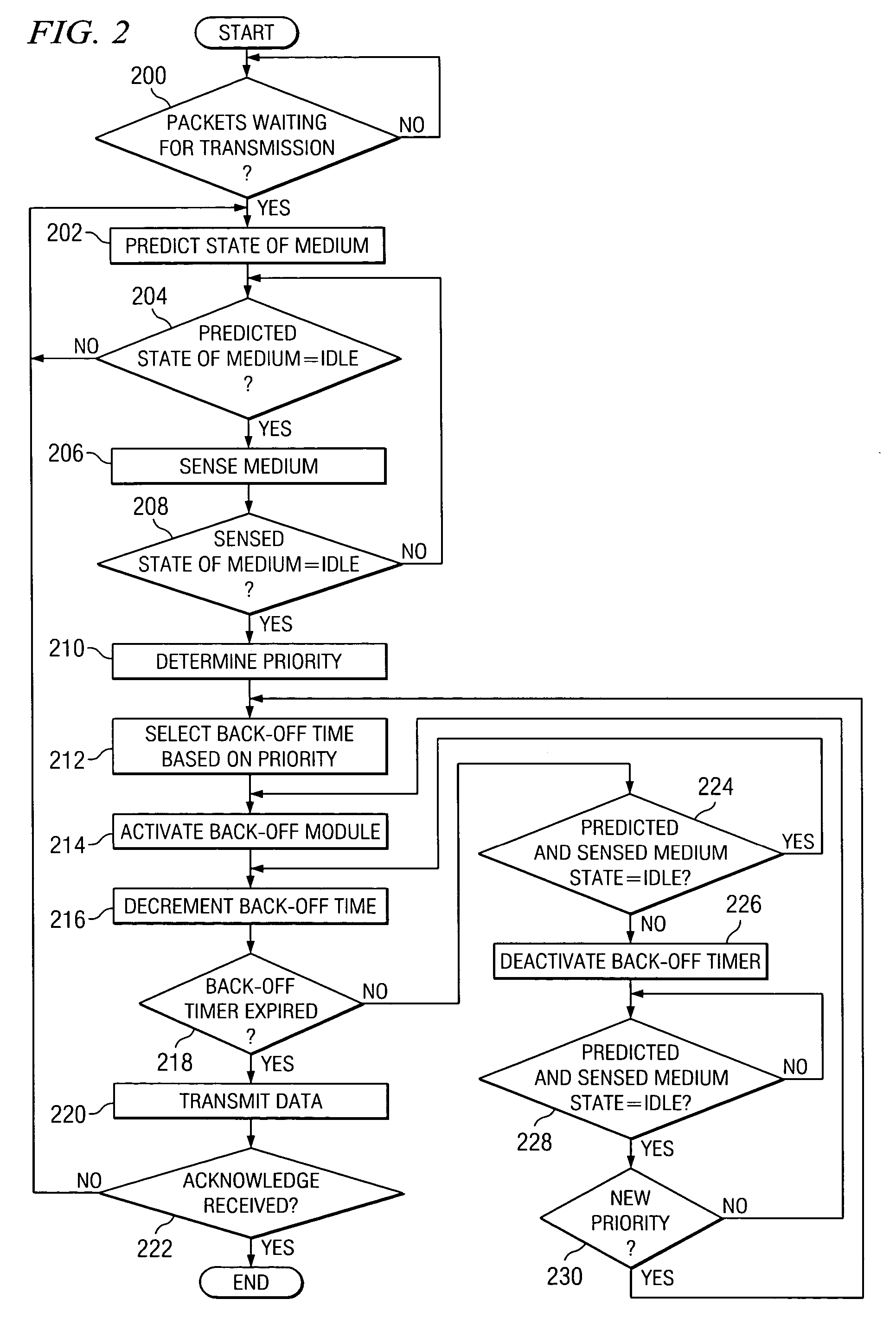Method and system for providing a priority-based, low-collision distributed coordination function using a super-frame structure
a distributed coordination and priority-based technology, applied in the field of wireless area networks, can solve the problems of complex realization, difficult integration of effective power saving modes, and worsening of wlan throughput, and achieve the effect of increasing the probability of successful transmission
- Summary
- Abstract
- Description
- Claims
- Application Information
AI Technical Summary
Benefits of technology
Problems solved by technology
Method used
Image
Examples
Embodiment Construction
[0024]FIGS. 1 through 7, discussed below, and the various embodiments used to describe the principles of the present invention in this patent document are by way of illustration only and should not be construed in any way to limit the scope of the invention. Those skilled in the art will understand that the principles of the present invention may be implemented for any suitably arranged wireless station.
[0025]FIG. 1 is a block diagram illustrating a system 100 for providing a priority-based, low-collision distributed coordination function (DCF) in accordance with one embodiment of the present invention. The system 100 comprises a basic service set (BSS). The BSS may be an independent BSS or an infrastructure BSS.
[0026]The system 100 comprises a plurality of stations 102 that are each operable to communicate with other stations 102 over a wireless medium 104. As used herein, “each” means every one of at least a subset of the identified items. It will be understood that one of the sta...
PUM
 Login to View More
Login to View More Abstract
Description
Claims
Application Information
 Login to View More
Login to View More - R&D
- Intellectual Property
- Life Sciences
- Materials
- Tech Scout
- Unparalleled Data Quality
- Higher Quality Content
- 60% Fewer Hallucinations
Browse by: Latest US Patents, China's latest patents, Technical Efficacy Thesaurus, Application Domain, Technology Topic, Popular Technical Reports.
© 2025 PatSnap. All rights reserved.Legal|Privacy policy|Modern Slavery Act Transparency Statement|Sitemap|About US| Contact US: help@patsnap.com



